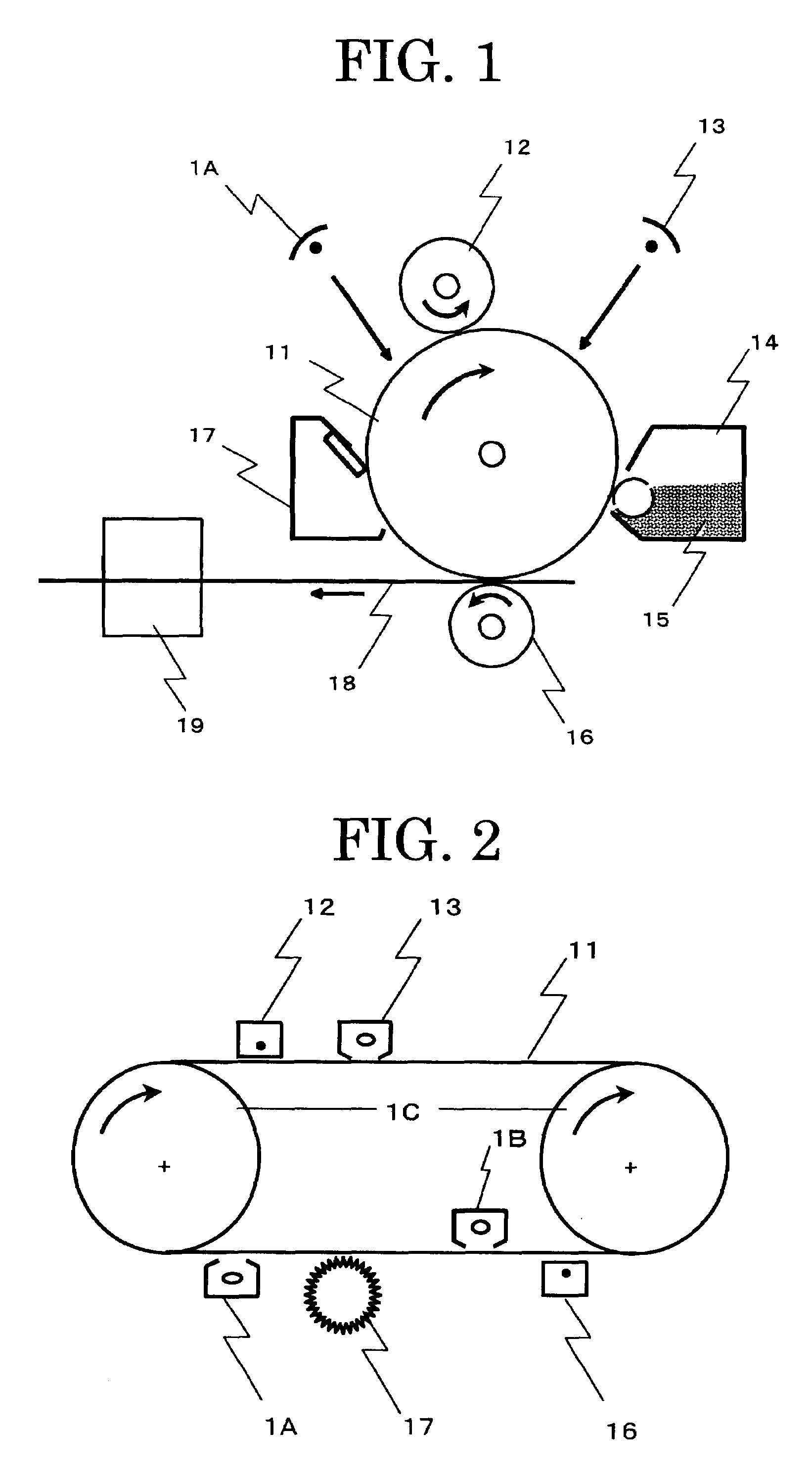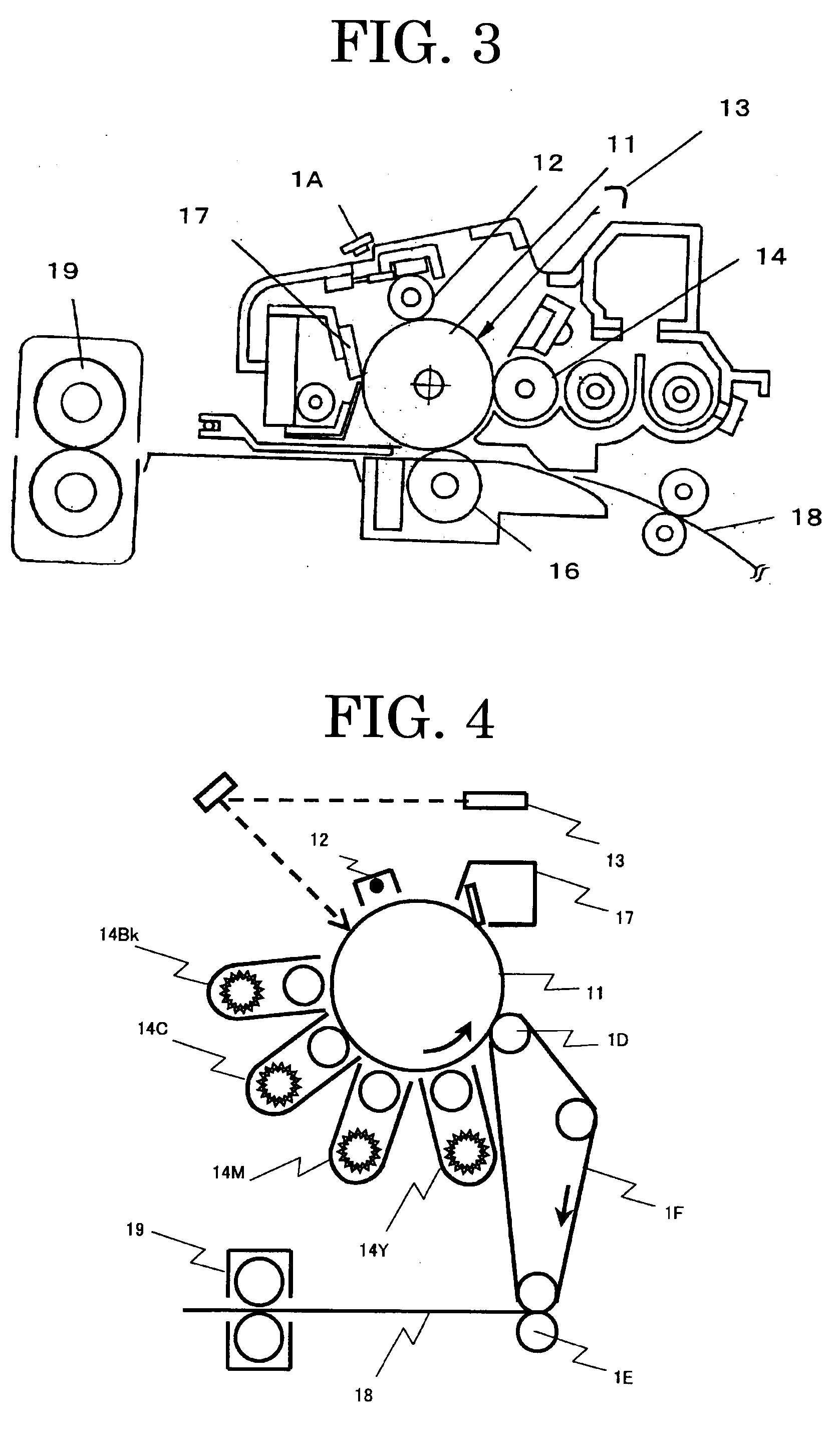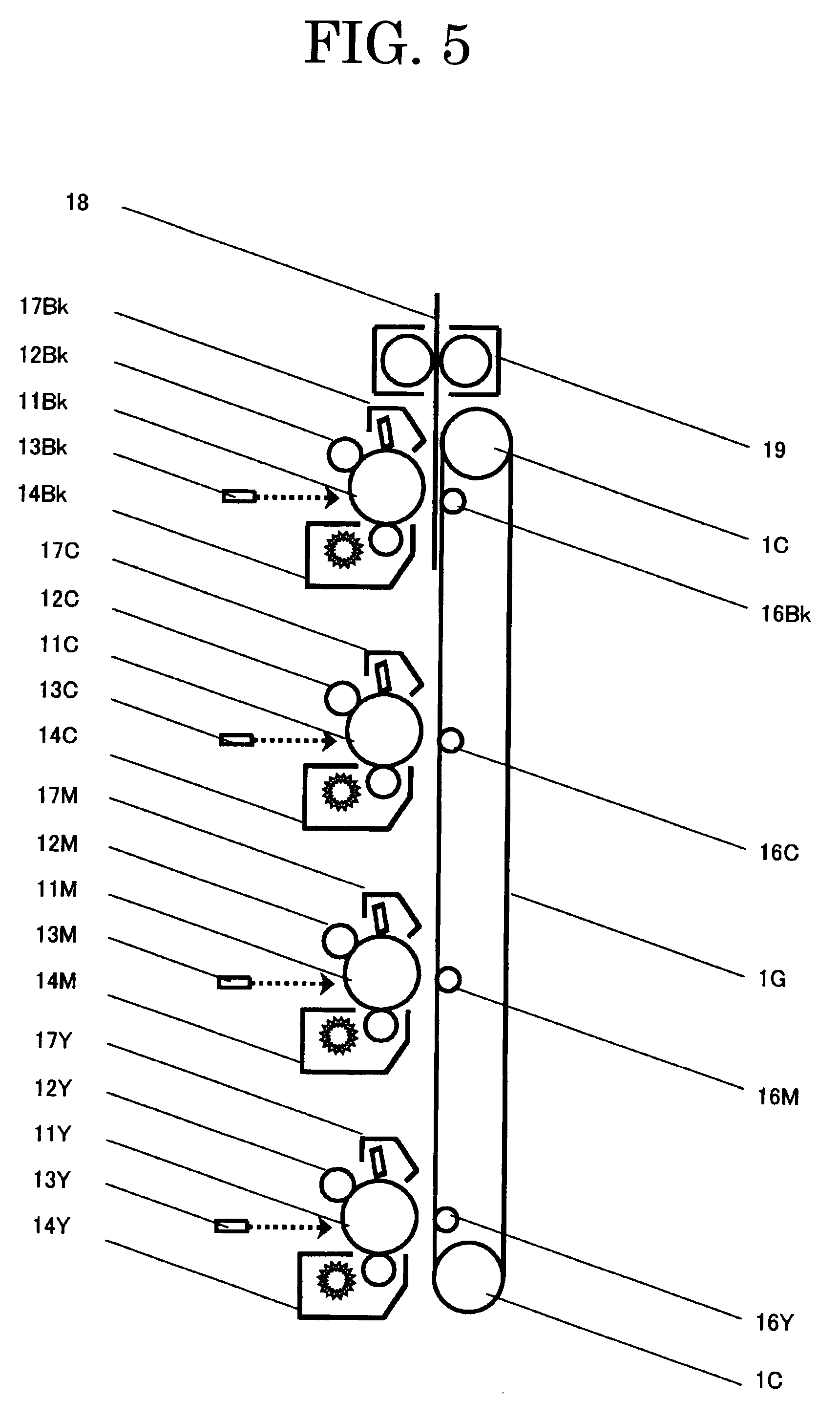Electrophotographic photoconductor, image forming apparatus, and process cartridge
- Summary
- Abstract
- Description
- Claims
- Application Information
AI Technical Summary
Benefits of technology
Problems solved by technology
Method used
Image
Examples
example 1
[0156]A metal-free phthalocyanine was dispersed under the following composition and condition to prepare a pigment dispersion.
Metal-free phthalocyanine pigment (Fastogen Blue 8120B by 3 partsDainippon Ink and Chemicals, Inc.):Cyclohexanone:97 parts
[0157]These were dispersed in a glass pot of 9 cm diameter using PSZ balls of 0.5 mm diameter for 5 hours at 100 rpm to prepare a pigment dispersion.
[0158]The pigment dispersion was used to prepare a coating liquid for the photosensitive layer of the following composition:
The pigment dispersion:60partsThe electron transporting material expressed by the25partsCompound 1-1:The hole transporting material expressed by the25partsCompound 2-1:Z-polycarbonate resin (Panlite TS-2050 by Teijin50partsChemicals, Ltd.):Silicone oil (KF50 by Shin-Etsu Chemical Co., Ltd.):0.01partsTetrahydrofuran:350parts
[0159]The coating liquid for the photosensitive layer was coated on an aluminum drum having 30 mm diameter and 340 mm length by dip coating and dried a...
example 2
[0160]A photoconductor was produced in the same manner as in the Example 1, except that a titanyl phthalocyanine prepared by the following synthesis example was used instead of the metal-free phthalocyanine pigment (Fastogen Blue 8120B by Dainippon Ink and Chemicals, Inc.) used in the Example 1. (hereinafter referred to as Photoconductor 2).
[0161]A pigment was prepared in accordance with the method disclosed in JP-A No. 2001-19871. More specifically, 29.2 g of 1,3-diiminoisoindoline was mixed with 200 ml of sulfolane, and 20.4 g of titanium tetrabutoxide was added dropwise to the mixture under nitrogen flow. Thereafter, the resultant mixture was gradually heated to 180° C., and allowed to react for 5 hours with agitation while the reaction temperature was kept at 170° C. to 180° C. After cooled down, the resulting precipitate was filtered, washed with chloroform until it became blue, washed with methanol for several times, and then washed with 80° C. hot water for several times, and...
examples 3 to 15
[0171]The photoconductor was produced in the same manner as in the Example 2, except that the electron transporting material and the hole transporting material used in the Example 2 were changed to those shown in Table 3. (hereinafter referred to as Photoconductors 3 to 15).
PUM
 Login to View More
Login to View More Abstract
Description
Claims
Application Information
 Login to View More
Login to View More - R&D Engineer
- R&D Manager
- IP Professional
- Industry Leading Data Capabilities
- Powerful AI technology
- Patent DNA Extraction
Browse by: Latest US Patents, China's latest patents, Technical Efficacy Thesaurus, Application Domain, Technology Topic, Popular Technical Reports.
© 2024 PatSnap. All rights reserved.Legal|Privacy policy|Modern Slavery Act Transparency Statement|Sitemap|About US| Contact US: help@patsnap.com










